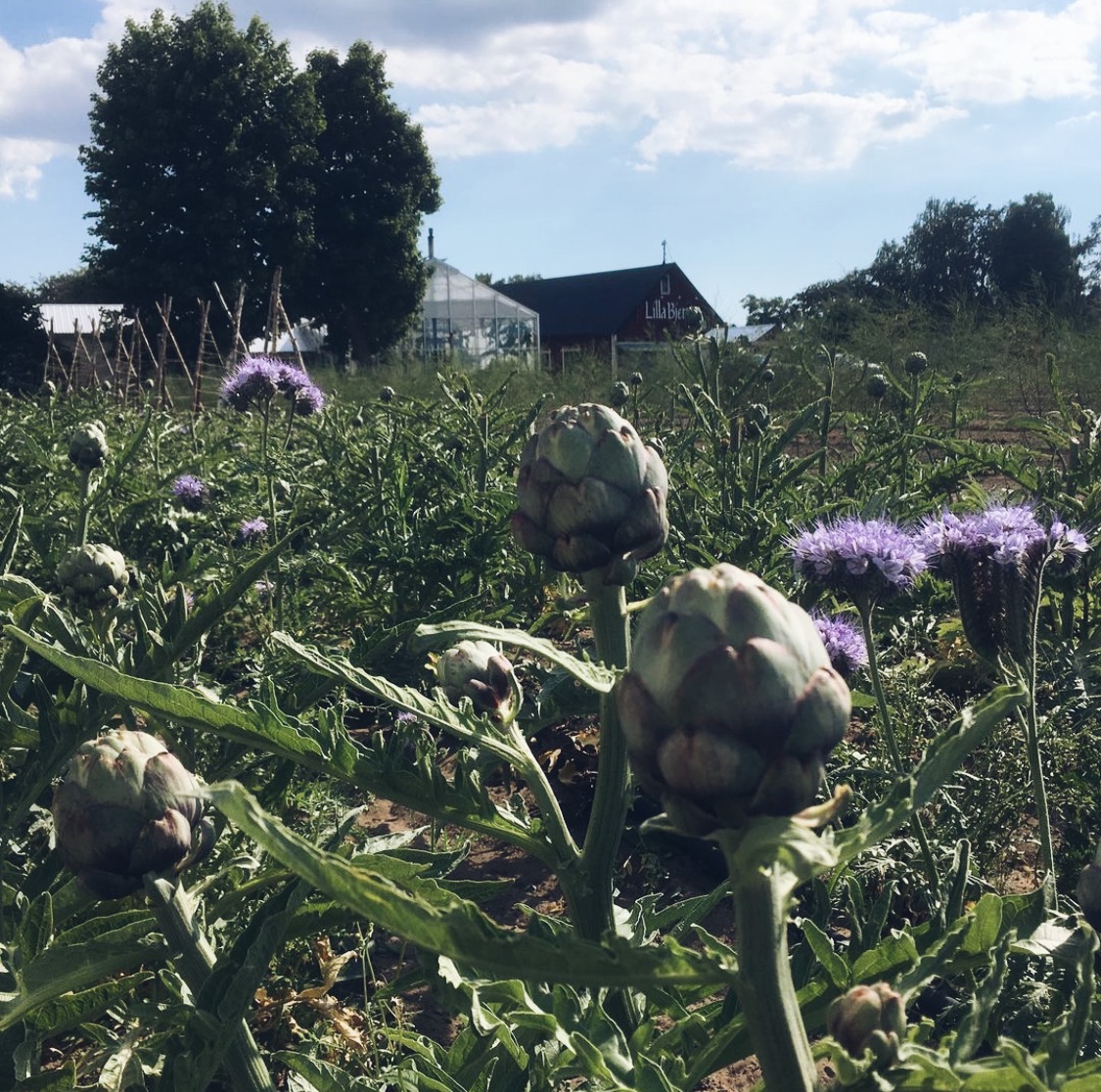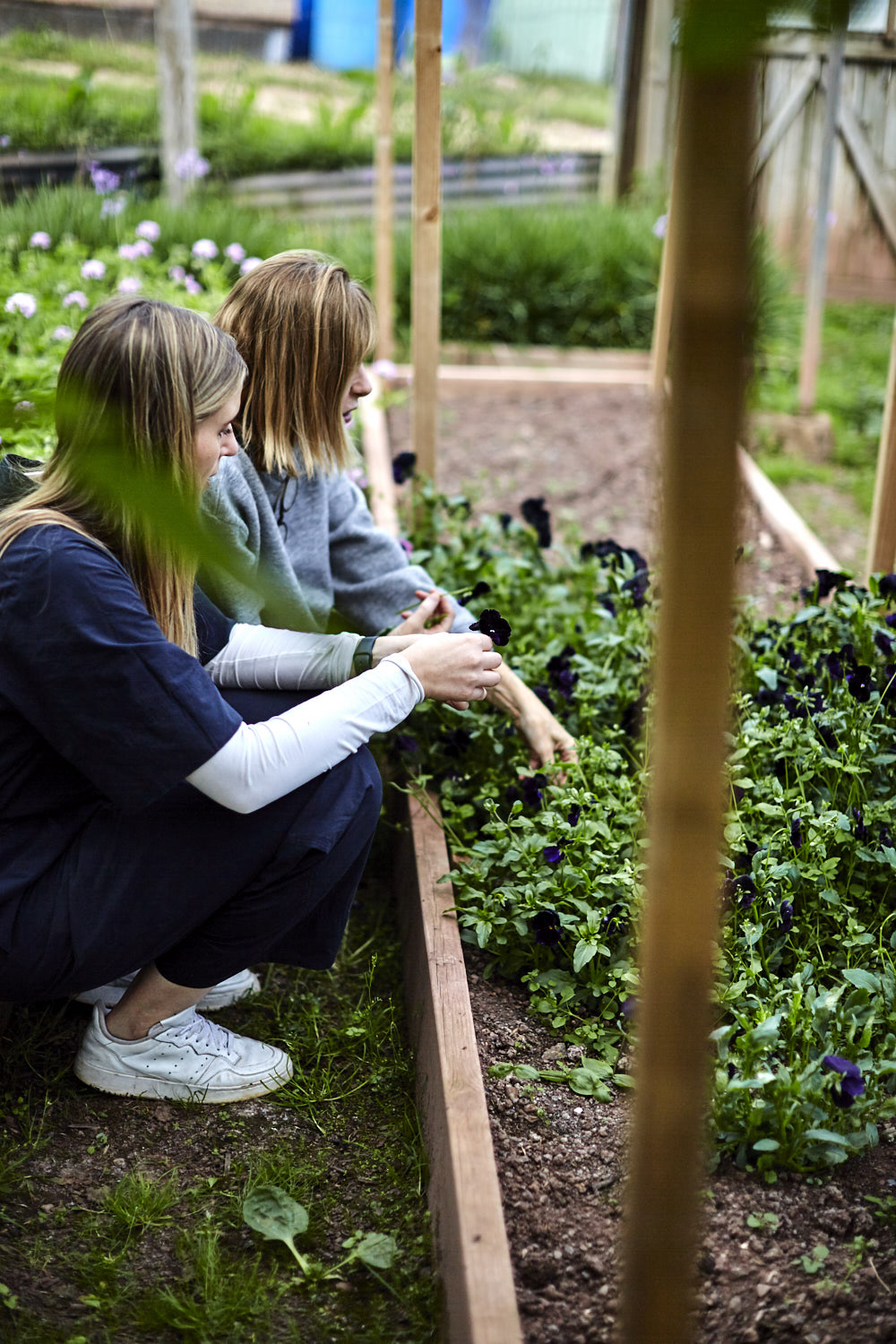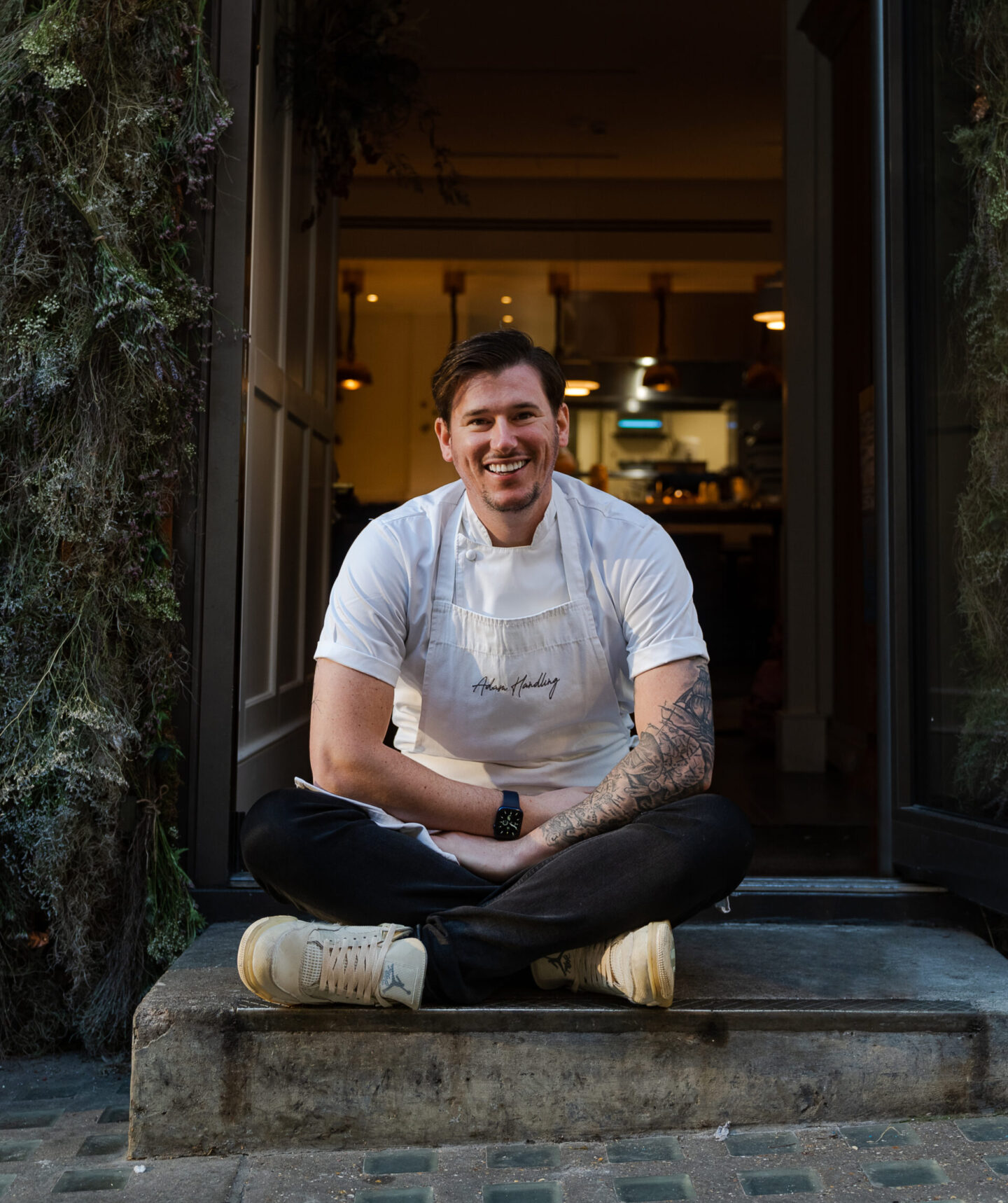Lilla Bjers: 99.9 percent is organic
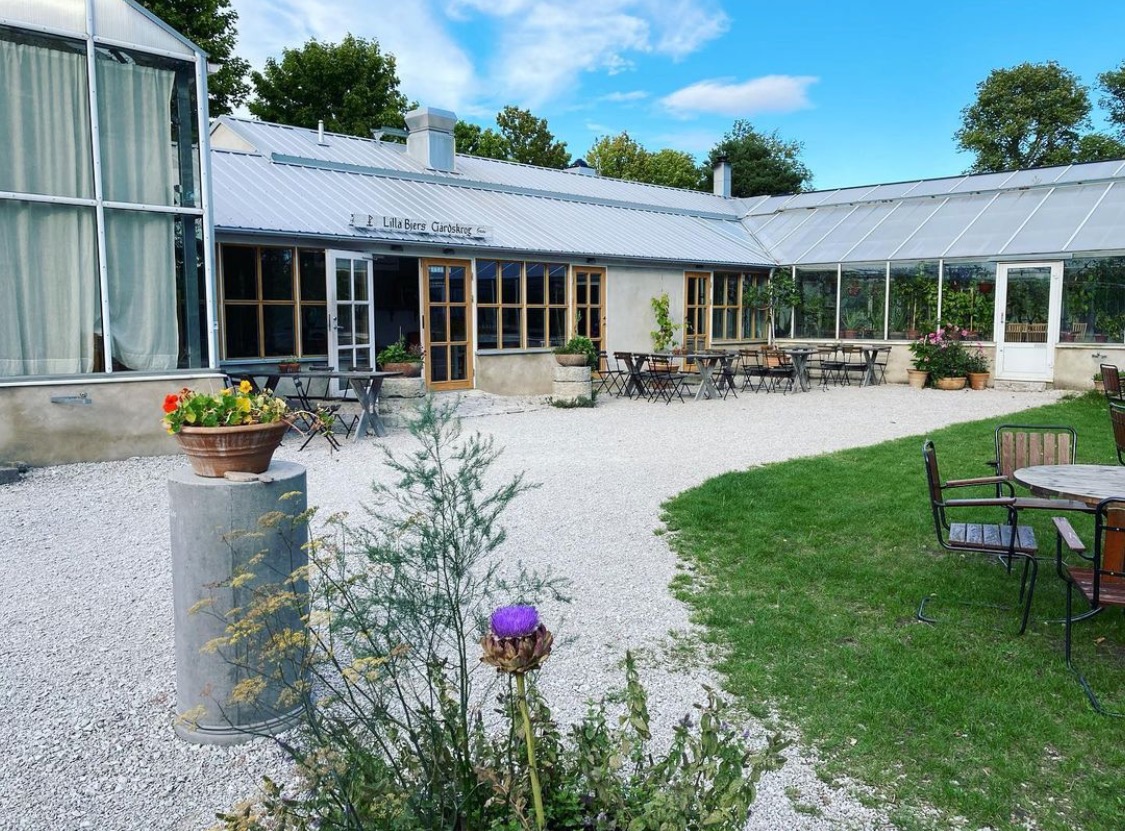
Lilla Bjers
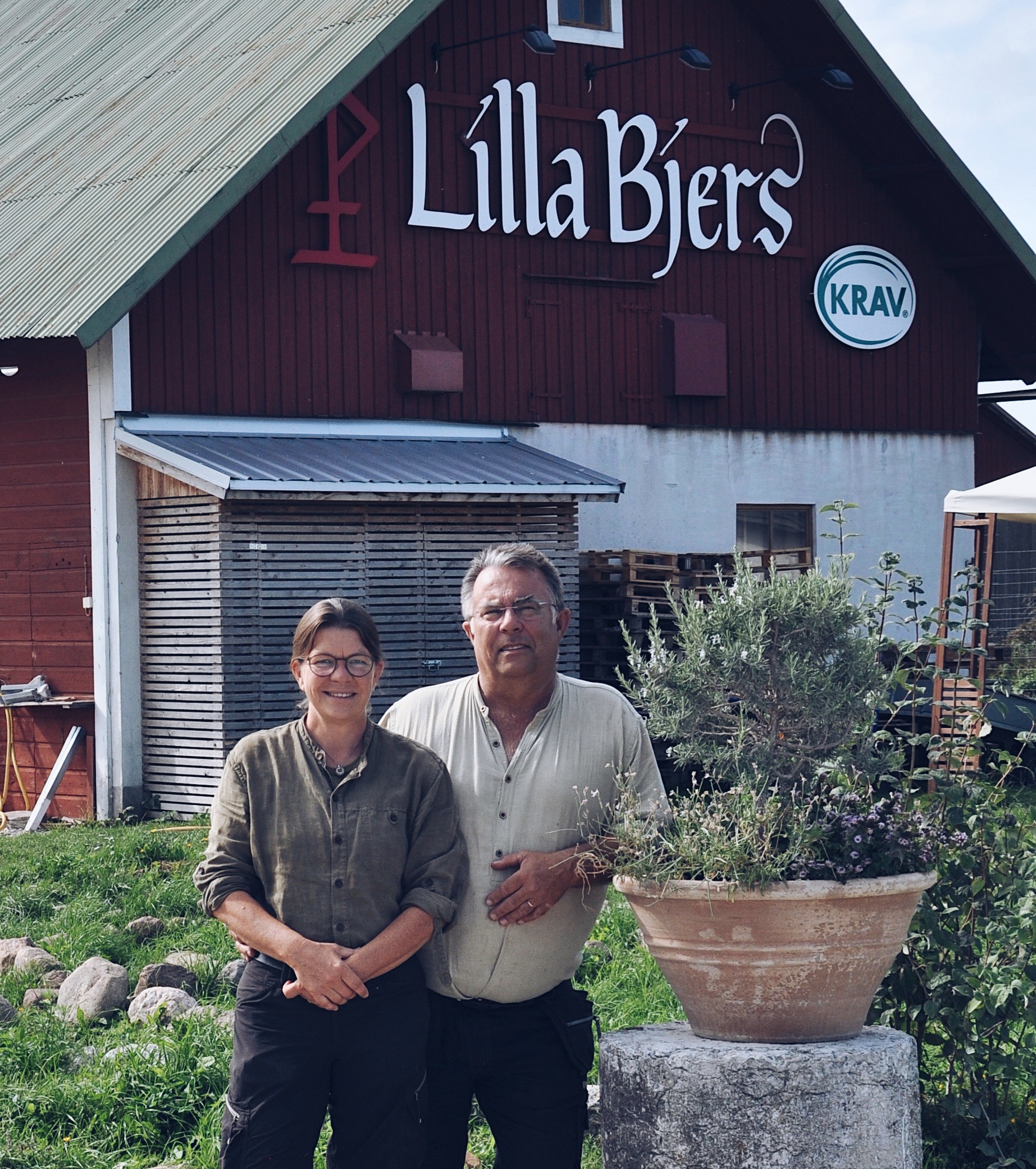
Margareta och Göran Hoas
How much of the menu is organic produce (average per year)?
99.9 percent. Organic salt and casings are not possible to get.
Do you make any food from scratch? For example, flour, miso, bread, garum, vinegar, etc.
We take starting from scratch to the extreme. We grow all our vegetables, fruits, and berries on our KRAV-certified farm. To give a few examples: We grow our emmer wheat which we grind into flour and use to bake all the bread for the restaurant. Last year, we took our leftover strawberries and made vinegar. In the spring, we take the sap from the birches and use it in desserts. We dry, ferment, and pickle many vegetables, to keep them year-around. We also make a variety of drinks, like different kombuchas, for our non-alcoholic drink package.
Does your staff undergo sustainability education? If so, how often?
We start every season in April with substantial information about KRAV-rules, waste minimization and separation, and social issues. We repeat this two months later in June and also in September and November. So we do proper education four times a year, but we discuss it every day.
What requirements do you have on the meat you serve at the restaurant?
We focus on our own vegetables in the restaurant but meat is a very important part of the system. We only serve KRAV-certified meat from Gotland: lamb, beef, and pork. This year, we had the opportunity to buy meat directly from KRAV-certified farms. This however takes a lot of time and planning because we have to do all the butchering ourselves in the future. But this gives us the advantage of being able to take care of the whole animal. We also have deer from our own forest. This year we will also have our own snail farm and therefore will be able to serve escargots.
How do you work with food waste? Do you have guidelines and goals in regards to waste?
As we have the opportunity to pick just the right amount of vegetables for the restaurant, we have very little food waste. All leftovers from vegetables, we feed to our chickens and soon our snails. To minimize waste from plate scraping, we try to make portions the right size. The scrapings, we sort and recycle for biogas.
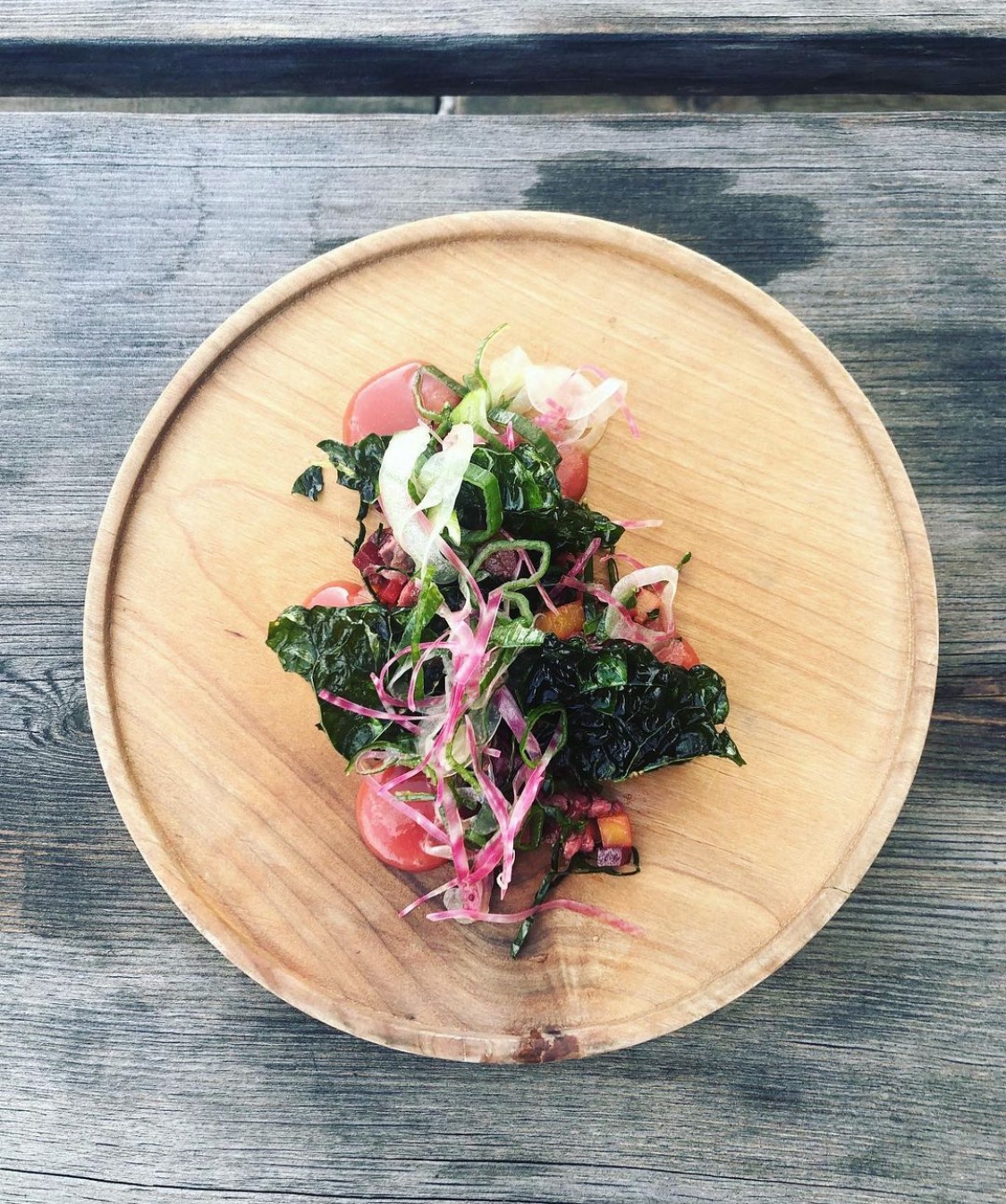
Tartar with black cabbage, plums and onions.
